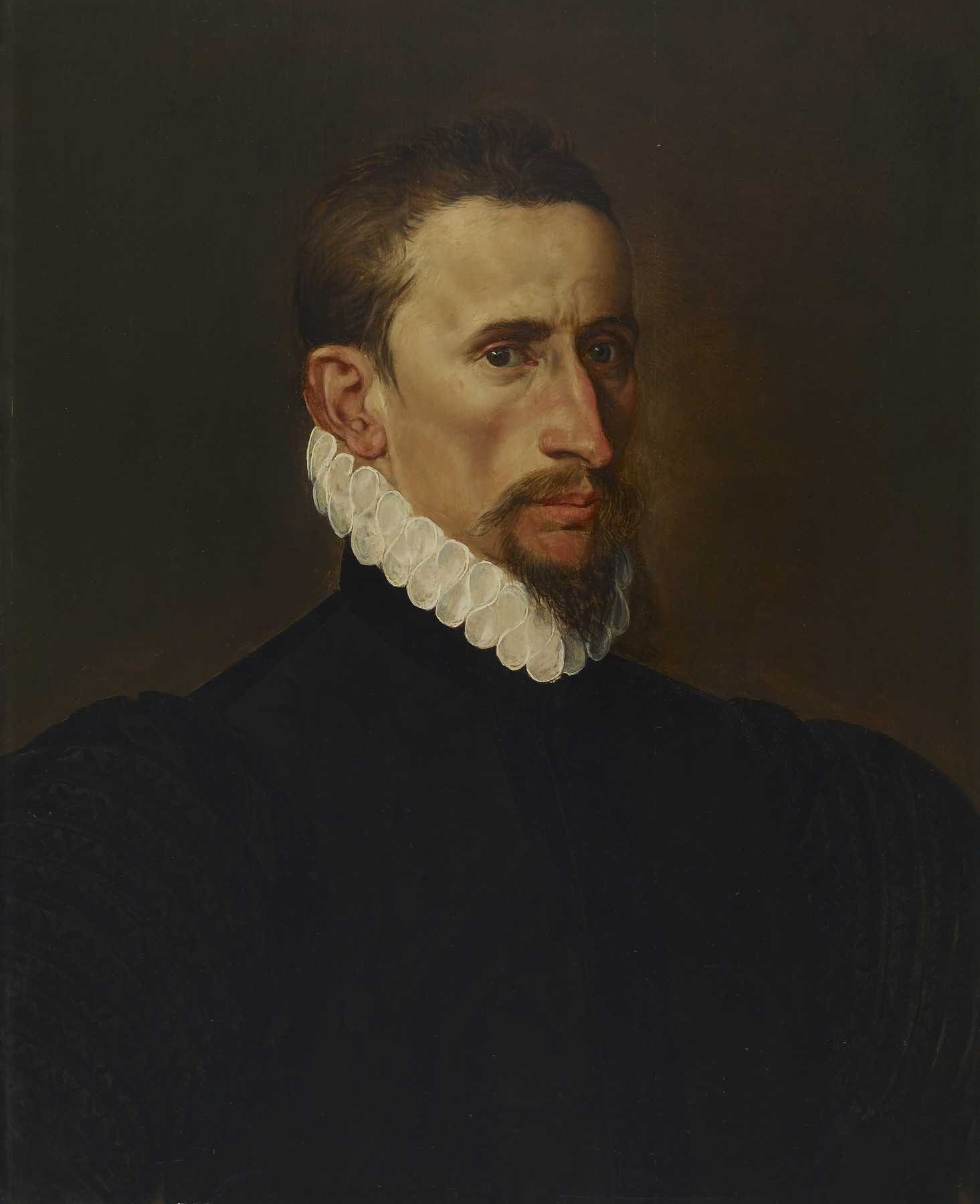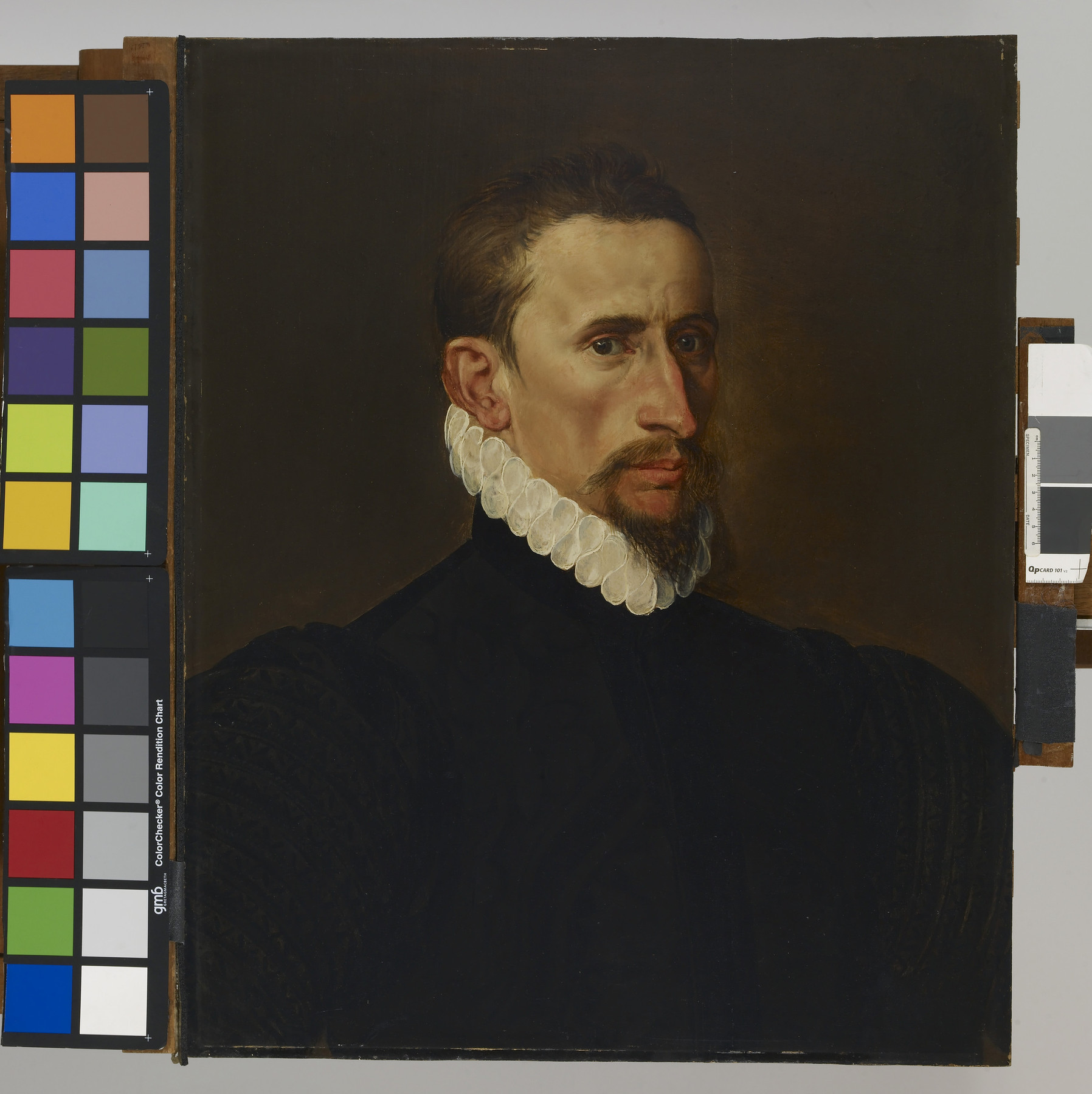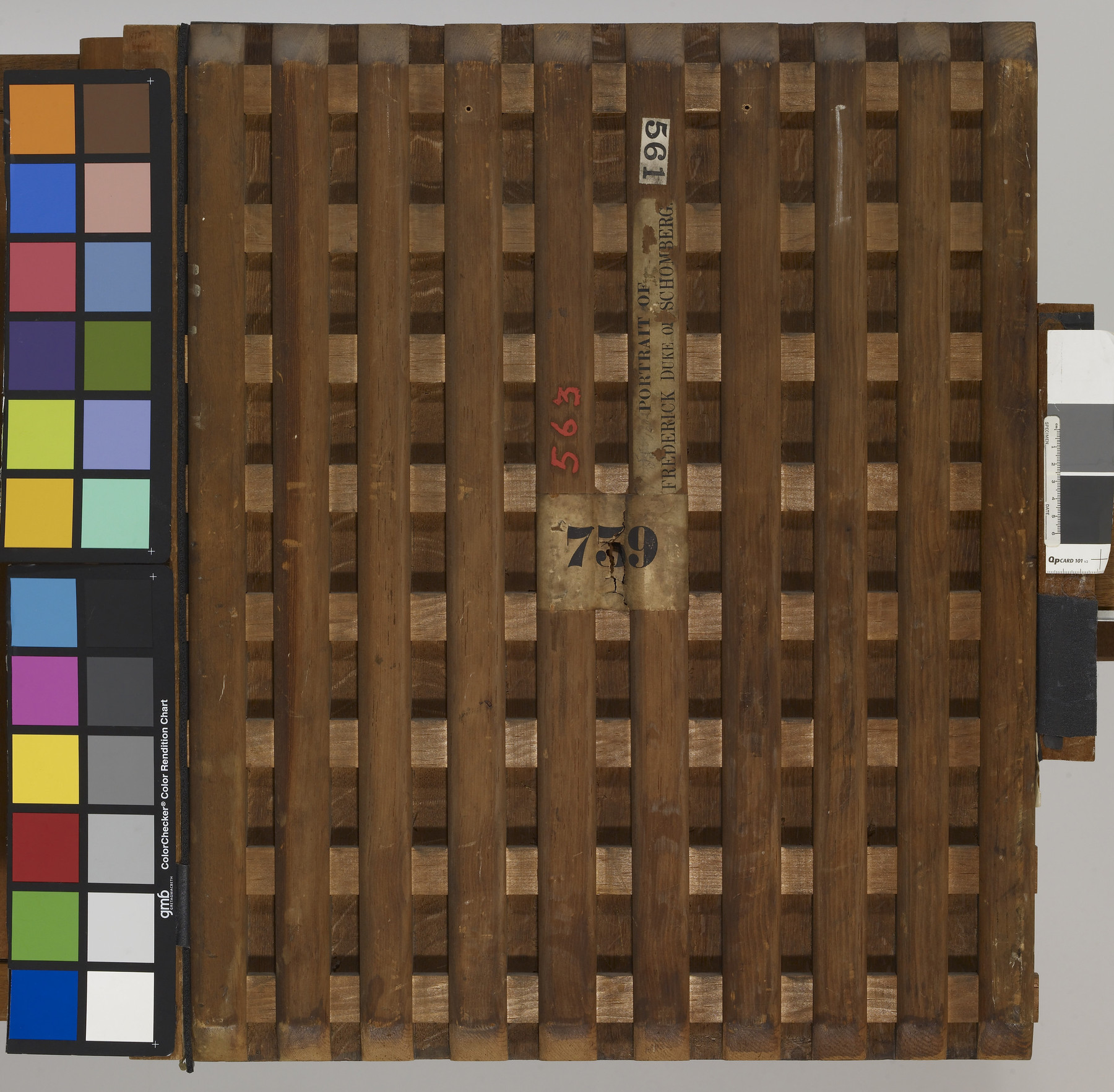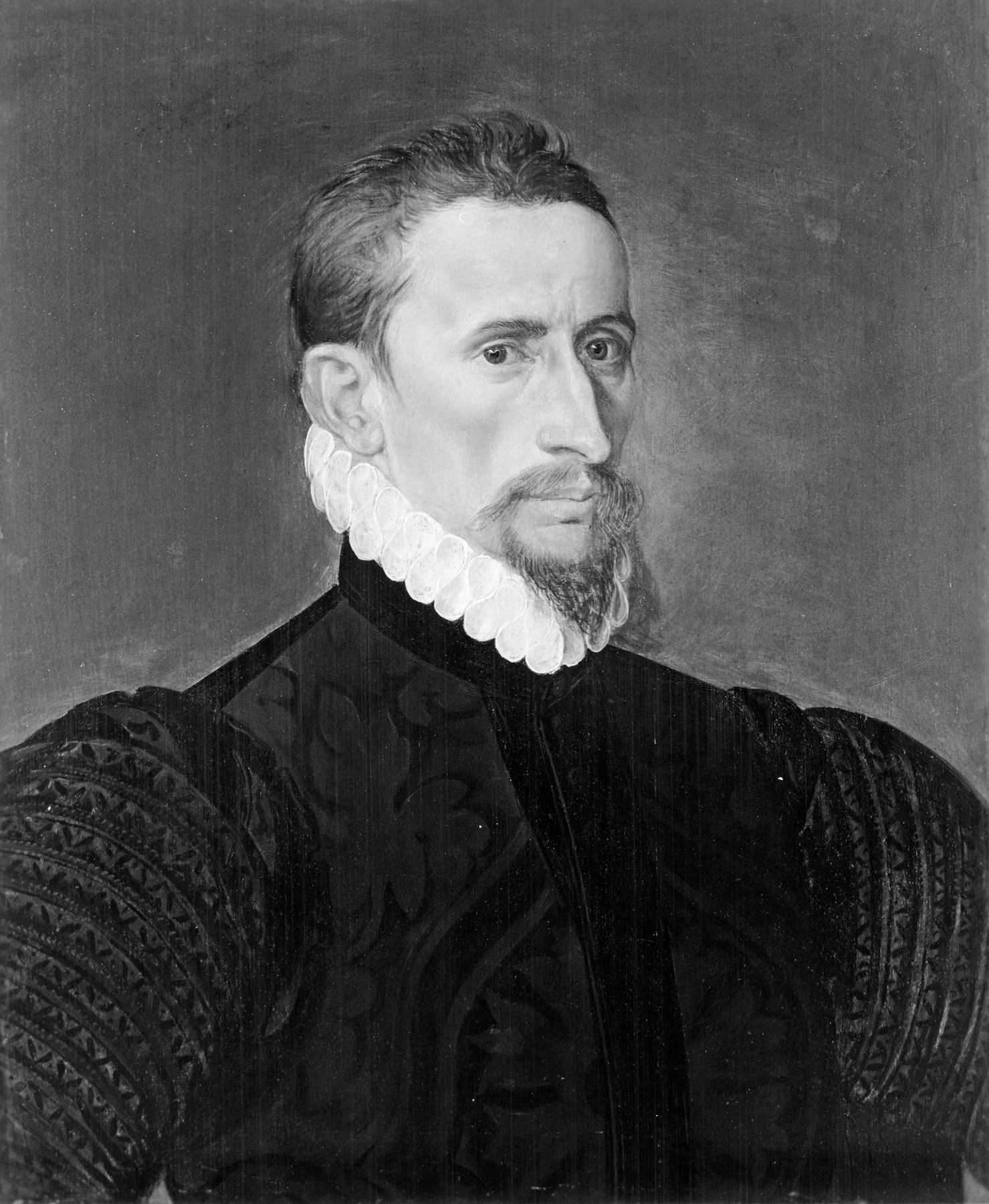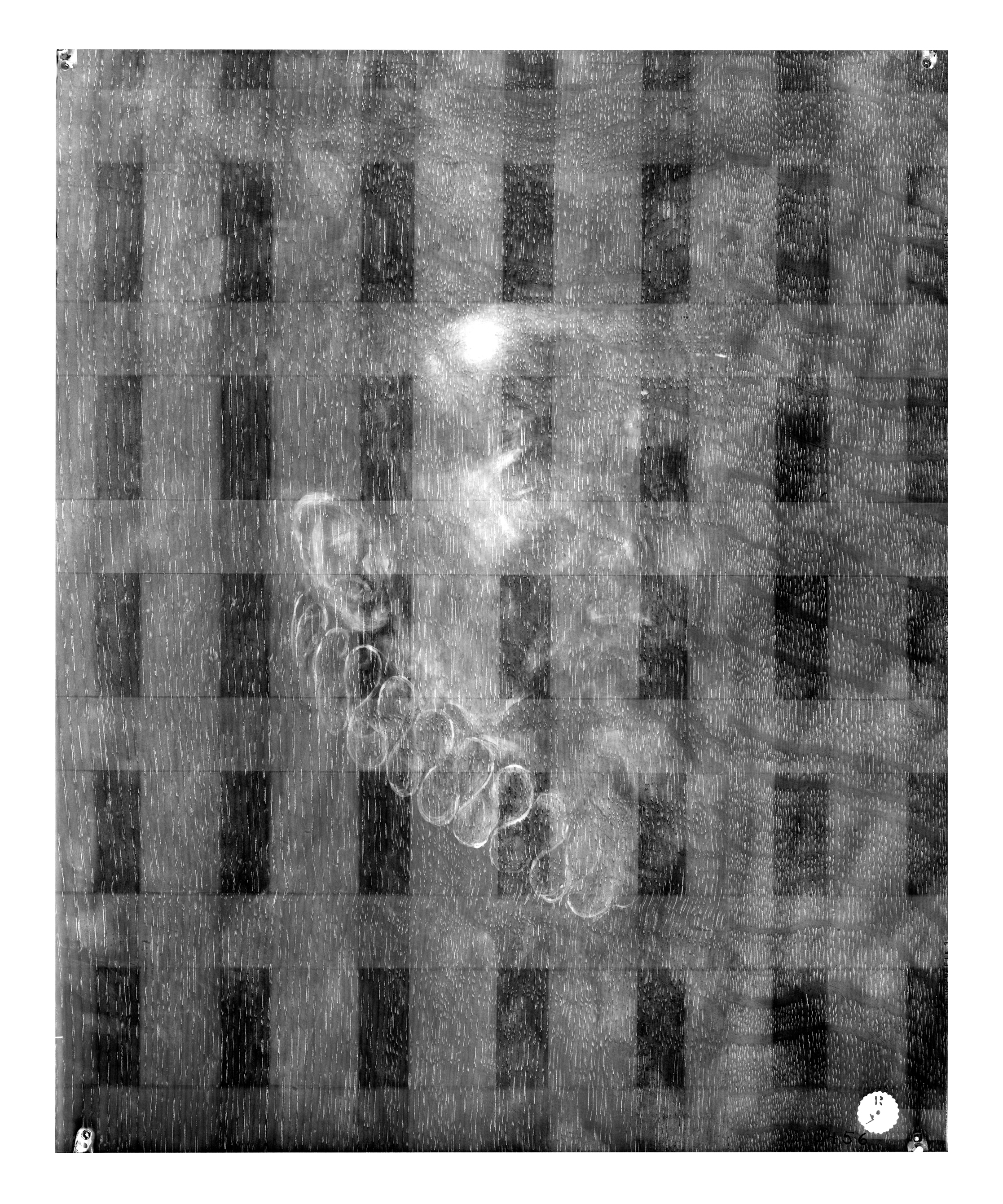Portrait of a Gentleman
(Renaissance Europe )
The severe costume with its high, closed neck, starched ruff, and discretely ribbed sleeves, along with a pointed goatee in the Spanish fashion suggest that the sitter is a wealthy Spaniard or Fleming attached to the government of the Spanish governor in Brussels. There were many Spanish noblemen and men from the rising middle class who served the Spanish royal governor or who were involved in overseas trade.
Frans Floris became a master in the Antwerp painters' guild in 1539-1540 and traveleed in Italy approximately in the years 1541 to 1545. Upon his return he developed friendships with various important scholars and important figures in government circles. He is chiefly known for his figure paintings, but he was also a subtle portraitist, his brushwork looser than the meticulous brushwork of many Flemish portraitists.
Provenance
Provenance (from the French provenir, 'to come from/forth') is the chronology of the ownership, custody, or location of a historical object. Learn more about provenance at the Walters.
Don Marcello Massarenti Collection, Rome, no. 739; Henry Walters, Baltimore, 1902, by purchase; Walters Art Museum, 1931, by bequest.
Conservation
| Date | Description | Narrative |
|---|---|---|
| 4/16/1900 | Treatment | x-ray |
| 7/1/1948 | Treatment | cleaned; varnish removed or reduced |
| 11/15/1976 | Examination | examined for condition |
| 1/10/2005 | Treatment | other |
Geographies
Belgium, Antwerp (Place of Origin)
Measurements
H: 24 x W: 19 1/2 in. (61 x 49.5 cm)
Credit Line
Acquired by Henry Walters with the Massarenti Collection, 1902
Location in Museum
Accession Number
In libraries, galleries, museums, and archives, an accession number is a unique identifier assigned to each object in the collection.
In libraries, galleries, museums, and archives, an accession number is a unique identifier assigned to each object in the collection.
37.563

